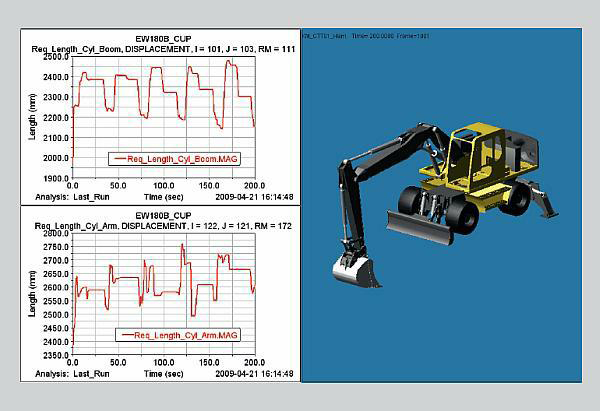In order to align their product development better with customer demands and make the whole design process more efficient, VOLVO CE has recently made a considerable investment into state-of-the-art methods for virtual product development (VPD).
For this purpose, extensive measurement campaigns were conducted to gain a better understanding of the distribution of customer loads for a wide variety of possible applications. Suitable simulation methods were introduced or adapted to evaluate the field data and determine the impact of loads on the system (in terms of durability, vibrations, etc.).
Standardize VPD processes
One goal of this project is to create a unified process for lifetime estimation, i.e. to formulate consistent guidelines for model building and evaluation. This involves creating suitable models for mechanical and hydraulically components, but a major focus is the statistical analysis of load data and the derivation of design targets.
In their cooperation with ITWM, VOLVO CE receives support on the following topics:
- Consultation on the derivation of design targets and the VPD-process in general
- Creation of simulation models
- Training of VOLVO employees in the use of new simulation methods
- Choice of suitable CAE software
- Computer-based solution of problems from durability engineering for selected applications
The different tasks an excavator may perform vary considerably in their frequency and severity. This is taken into account in the evaluation of customer data and the derivation of loads by means of statistical methods like analysis of variance, factor analysis, and Monte-Carlo-simulation.
The result are load profiles for different subsystems of the excavator that cover a large percentage of possible missions and may serve as input for computer simulations. Another important question is in how far the measurements made for one particular excavator can be used to assess loads for variant configurations.

